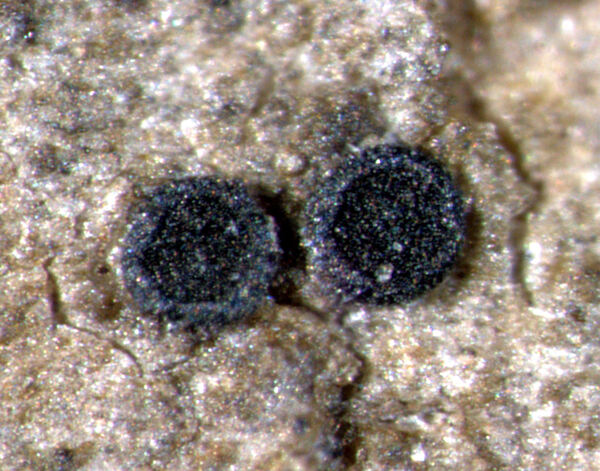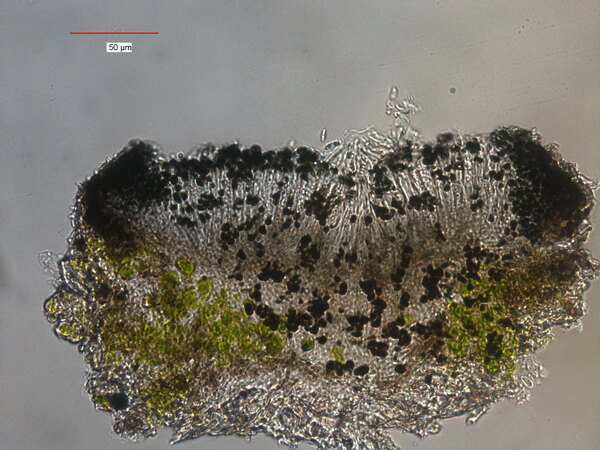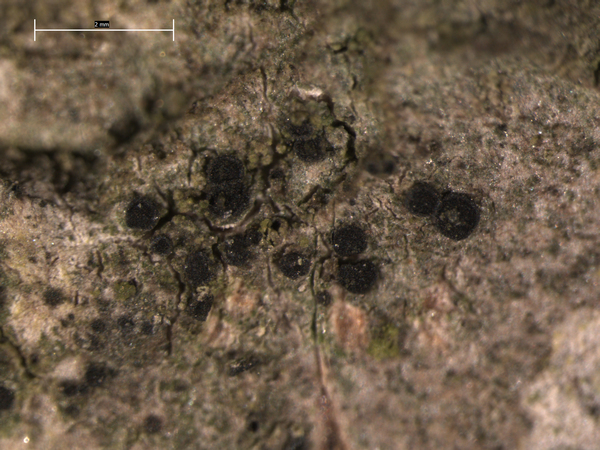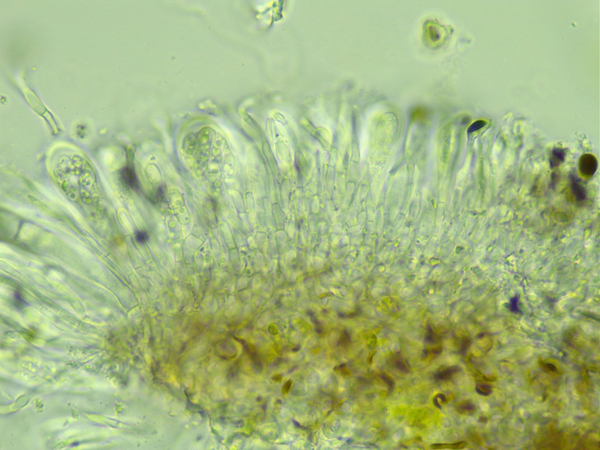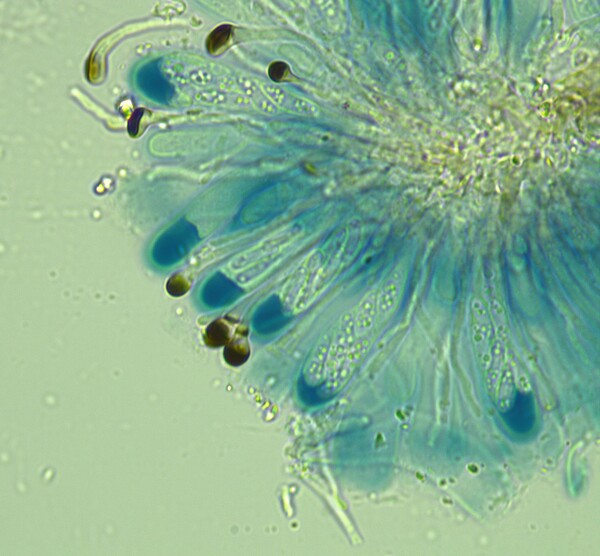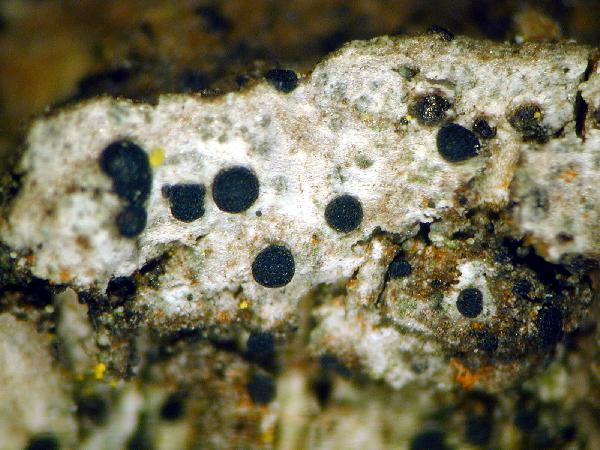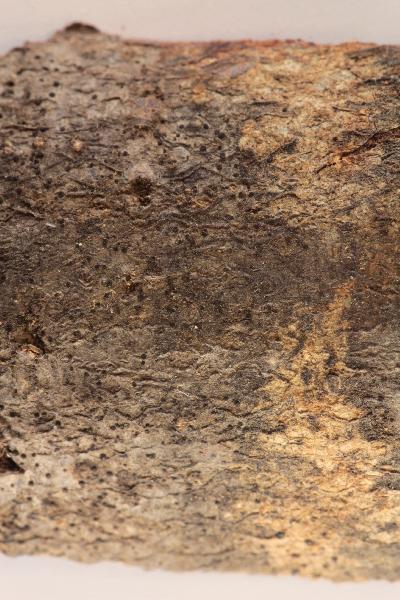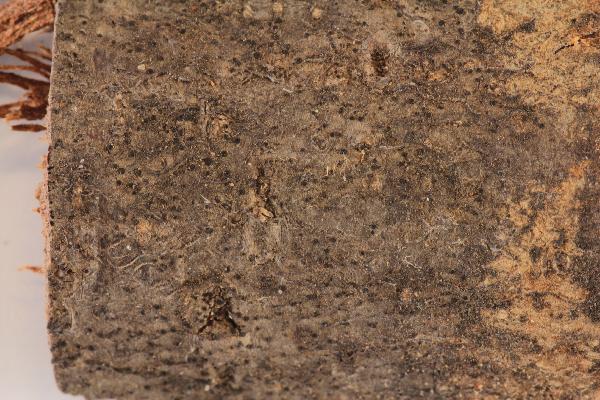Catillaria nigroclavata (Nyl.) J. Steiner
Sitzungsber. Akad. Wiss. Wien, Math.-naturw. Kl., Abt. 1, 107: 157, 1898. Basionym: Lecidea nigroclavata Nyl. - Bot. Not.: 160, 1853.
Synonyms: Biatorina ilicis (A. Massal.) Jatta; Biatorina nigroclavata (Nyl.) Arnold; Catillaria ilicis A. Massal.; Lecidea ilicis A. Massal.; Microlecia nigroclavata (Nyl.) M. Choisy
Distribution: N - VG (Castello 1996), Frl (Badin & Nimis 1996, Castello & Skert 2005), Ven (Nimis & al. 1996c, Valcuvia & al. 2000c, Lazzarin 2000b, Nascimbene 2008, 2008c, Nascimbene & al. 2008e, 2012, 2015, Nascimbene & Marini 2010, Obermayer 2020), TAA (Hinteregger 1994, Nascimbene 2006c, 2014, Nascimbene & al. 2007b, 2014, 2022), Lomb (Valcuvia & Gianatti 1995, Arosio & al. 2003, Valcuvia & Truzzi 2007b, Gheza & al. 2022), Piem (Arosio & al. 1998, Isocrono & al. 2003, 2009, Matteucci & al. 2010), VA (Valcuvia 2000, Valcuvia & al. 2000b, Matteucci & al. 2008, Ongaro & al. 2022), Emil (Nimis & al. 1996, Morselli & Regazzi 2006, Fariselli & al. 2020), Lig (Giordani & Incerti 2008, Giordani & al. 2025). C - Tosc (Tretiach & Nimis 1994, Loppi 1996b, Loppi & al. 1998, 2004, 2006, Putortì & Loppi 1998, 1999, Paoli & Loppi 2008, Brunialti & Frati 2010, Loppi & Nascimbene 2010, Benesperi 2011, Nascimbene & al. 2012, 2015, Paoli & al. 2012, 2015d, Benesperi & al. 2013, Brackel 2015, Fačkovcová & al. 2024), Marc (Nimis & Tretiach 1999, Frati & Brunialti 2006, Brackel 2015), Umb (Ravera 1998, Ravera & al. 2006), Laz (Bartoli & al. 1997, Nimis & Tretiach 2004, Ruisi & al. 2005, Munzi & al. 2007, Brackel 2015), Abr (Olivieri & al. 1997, 1997b, Loppi & al. 1999, Nimis & Tretiach 1999, Brackel 2015, Caporale & al. 2016, Gheza & al. 2021), Mol (Garofalo & al. 1999, Nimis & Tretiach 1999, Caporale & al. 2008, Genovesi & Ravera 2014, Paoli & al. 2015, Caporale & Ravera 2020), Sar (Zedda & Sipman 2001, Zedda 2002, Rizzi & al. 2011, Cossu 2013, Di Nuzzo & al. 2022). S - Camp (Garofalo & al. 1999, 2010, Aprile & al. 2003b, Nimis & Tretiach 2004, Catalano & al. 2012, 2016, Brunialti & al. 2013, Ravera & Brunialti 2013, Brackel 2021), Pugl (Garofalo & al. 1999, Nimis & Tretiach 1999, Durini & Medagli 2004, Brackel 2011), Bas (Nimis & Tretiach 1999, Paoli & al. 2006, Potenza & al. 2010, Brackel 2011, Cassola & al. 2025), Cal (Puntillo 1996, Incerti & Nimis 2006, Brackel & Puntillo 2016, 2023), Si (Nimis & al. 1994, Grillo & Cristaudo 1995, Grillo 1998, Grillo & al. 2002, Grillo & Caniglia 2004, Caniglia & Grillo 2006b, Brackel 2008c, Cataldo & Minissale 2015, Puglisi & Cataldo 2019).
Description: Thallus crustose, very thin, often immersed and inapparent, white-grey or grey-brown, without a distinct prothallus. Apothecia lecideine, round, broadly adnate, (0.15-)0.3-0.4(-0.5) mm across, with a dark brown to dull black, flat to finally convex, epruinose disc and a thin, smooth, raised, finally sometimes excluded proper margin. Proper exciple with a thin, pale to dark brown outer zone composed of pigmented caps of hyphal end-cells, colourless within; epithecium brown-black, K-, N-; hymenium colourless, 30-40 µm high; paraphyses mostly simple, easily made free, 1.5-2 µm thick at mid-level, the apical cells distinctly capitate, up to 6 µm wide, with a cap of dark brown pigment deposited within the hyphal wall; hypothecium pale to dark brown at least in upper part, paler in lower part. Asci 8-spored, clavate, with a K/I+ blue outer coat and a K/I+ uniformly blue apical dome, Catillaria-type. Ascospores 1-septate, hyaline, oblong-ellipsoid, (7-)8-10(-12) x (2-)2.5-3.5(-4) µm, thin-walled, without a perispore. Photobiont chlorococcoid. Spot tests: thallus K-, C-, KC-, P-, UV-. Chemistry: without lichen substances.Note: a mainly mild-temperate, holarctic species found on isolated deciduous trees, also in rather disturbed habitats, e.g. in parklands, and on wayside trees, sometimes growing as a parasite on other lichens (Brackel 2015). For the distinction towards C. mediterranea and C. servitii see Tretiach & Hafellner (1998).
Growth form: Crustose
Substrata: bark
Photobiont: green algae other than Trentepohlia
Reproductive strategy: mainly sexual
Commonnes-rarity: (info)
Alpine belt: absent
Subalpine belt: absent
Oromediterranean belt: absent
Montane belt: rather rare
Submediterranean belt: rather common
Padanian area: rare
Humid submediterranean belt: common
Humid mediterranean belt: rare
Dry mediterranean belt: extremely rare
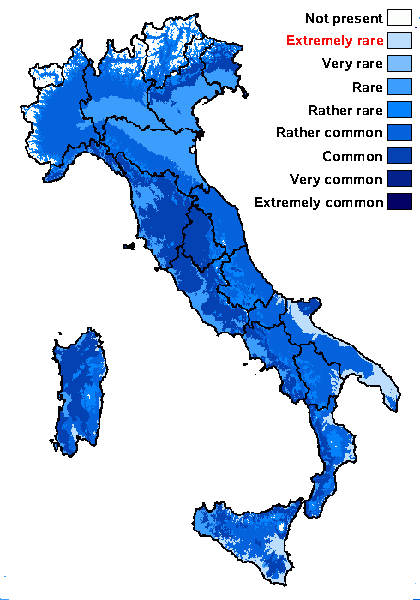
Predictive model
Herbarium samples
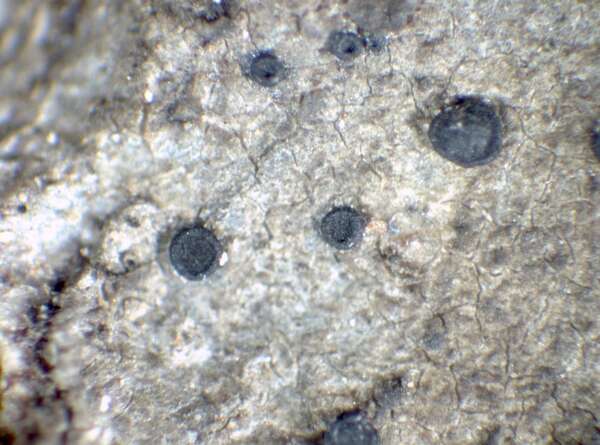

P.L. Nimis; Owner: Department of Life Sciences, University of Trieste
Herbarium: TSB (7171)
2001/11/23
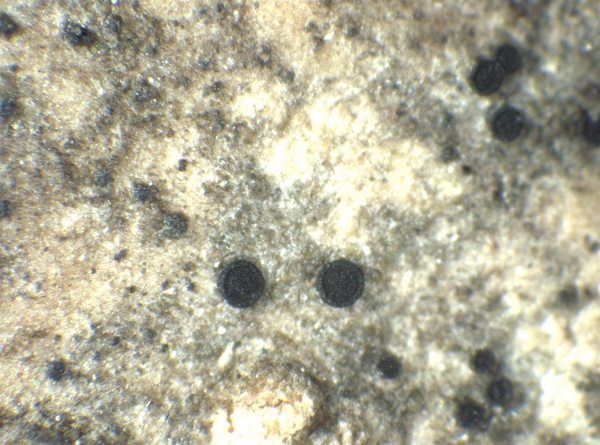

P.L.Nimis; Owner: Department of Life Sciences, University of Trieste
Herbarium: TSB (30170)
2008.03.06
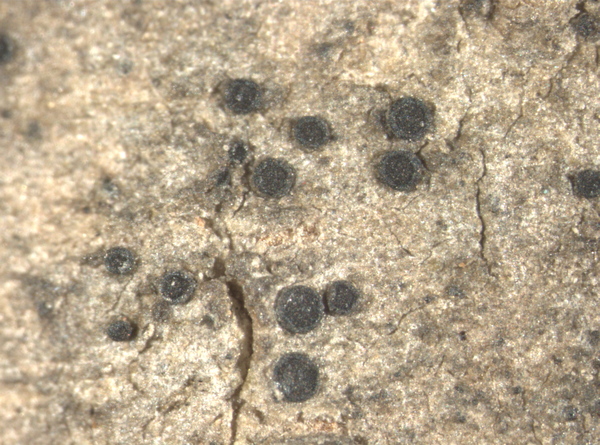

E. Pittao; Owner: Department of Life Sciences, University of Trieste
Herbarium: TSB (TSB 30170)
20.10.2009
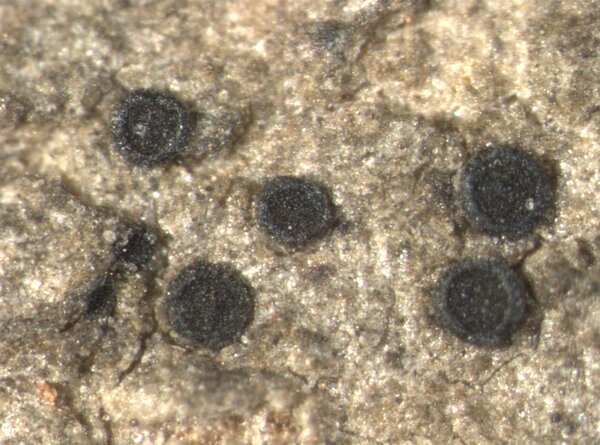

E. Pittao; Owner: Department of Life Sciences, University of Trieste
Herbarium: TSB (TSB 30170)
20.10.2009
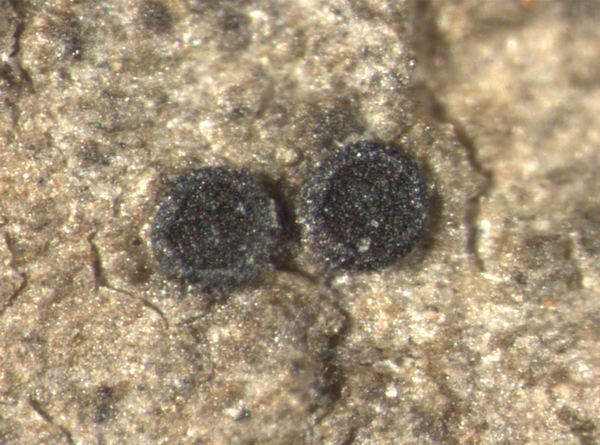

E. Pittao; Owner: Department of Life Sciences, University of Trieste
Herbarium: TSB (TSB 30170)
20.10.2009

Courtesy: Olivier et Danièle Gonnet - Source: https://www.afl-lichenologie.fr/Photos_AFL/Photos_AFL_C/Textes_C3/Catillaria_nigroclavata.htm
France, oct. 2015 - sur Arbutus unedo - Madonetta - Corse
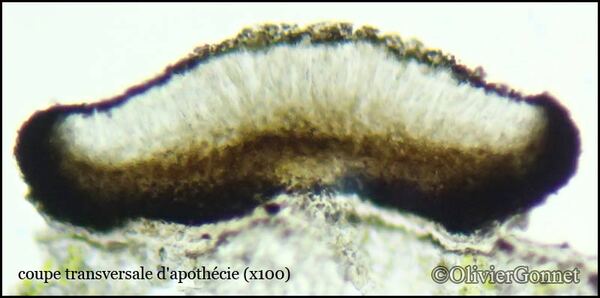
Courtesy: Olivier et Danièle Gonnet - Source: https://www.afl-lichenologie.fr/Photos_AFL/Photos_AFL_C/Textes_C3/Catillaria_nigroclavata.htm
France, oct. 2015 - sur Arbutus unedo - Madonetta - Corse
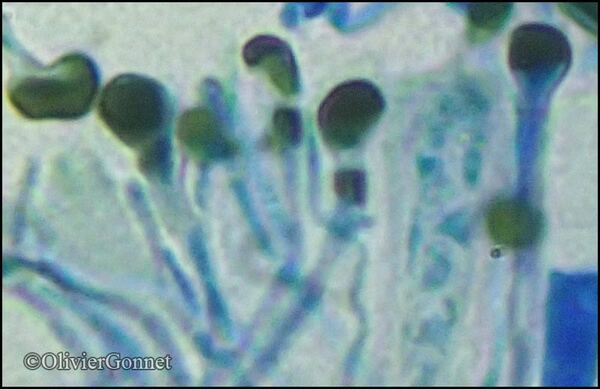
Courtesy: Olivier et Danièle Gonnet - Source: https://www.afl-lichenologie.fr/Photos_AFL/Photos_AFL_C/Textes_C3/Catillaria_nigroclavata.htm
France, oct. 2015 - sur Arbutus unedo - Madonetta - Corse

Courtesy: Olivier et Danièle Gonnet - Source: https://www.afl-lichenologie.fr/Photos_AFL/Photos_AFL_C/Textes_C3/Catillaria_nigroclavata.htm
France, oct. 2015 - sur Arbutus unedo - Madonetta - Corse
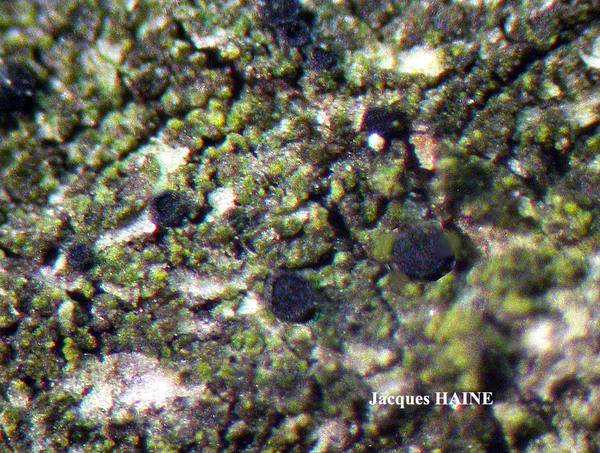
Jacques Haine - Source: http://www.lichensmaritimes.org/index.php?task=fiche&lichen=1230&lang=en
Belgium, Cerfontaine

Jacques Haine - Source: http://www.lichensmaritimes.org/index.php?task=fiche&lichen=1230&lang=en
Belgium, Cerfontaine
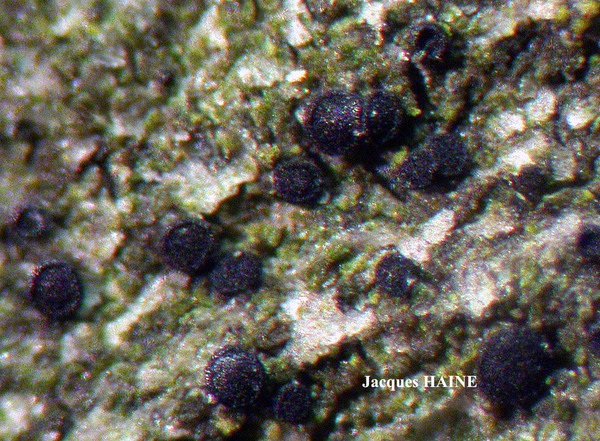
Jacques Haine - Source: http://www.lichensmaritimes.org/index.php?task=fiche&lichen=1230&lang=en
Belgium, Cerfontaine

Jacques Haine - Source: http://www.lichensmaritimes.org/index.php?task=fiche&lichen=1230&lang=en
Belgium, Cerfontaine
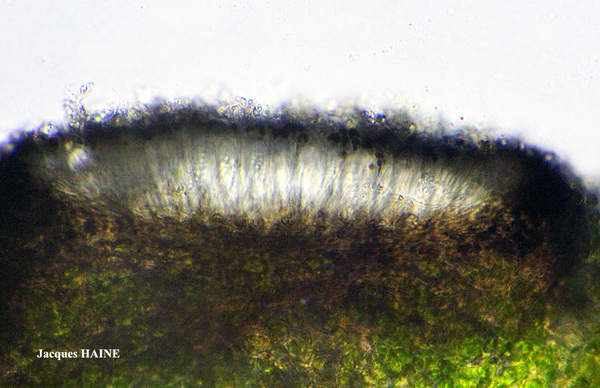
Jacques Haine - Source: http://www.lichensmaritimes.org/index.php?task=fiche&lichen=1230&lang=en
Belgium, Cerfontaine

Jacques Haine - Source: http://www.lichensmaritimes.org/index.php?task=fiche&lichen=1230&lang=en
Belgium, Cerfontaine
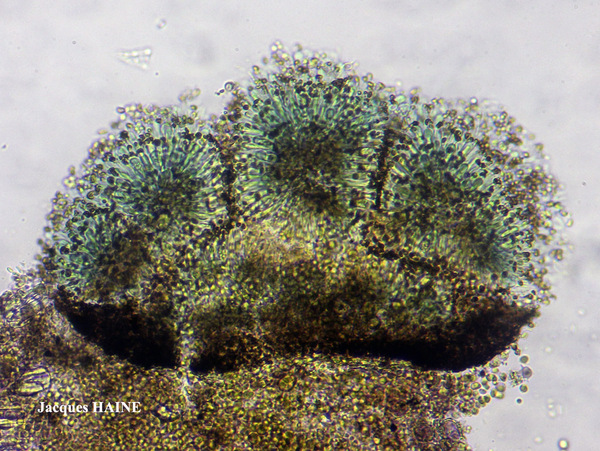
Jacques Haine - Source: http://www.lichensmaritimes.org/index.php?task=fiche&lichen=1230&lang=en
Belgium, Cerfontaine
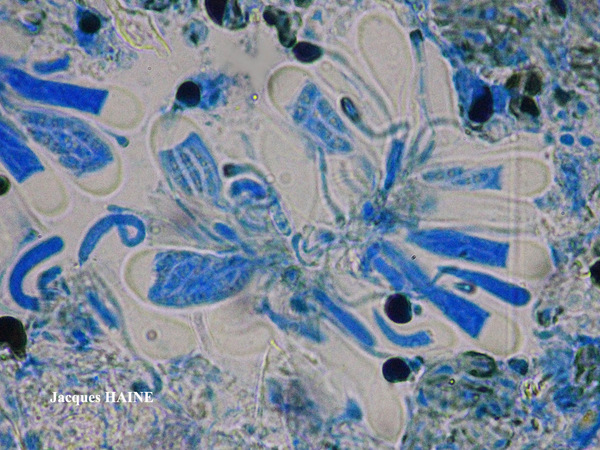
Jacques Haine - Source: http://www.lichensmaritimes.org/index.php?task=fiche&lichen=1230&lang=en
Belgium, Cerfontaine
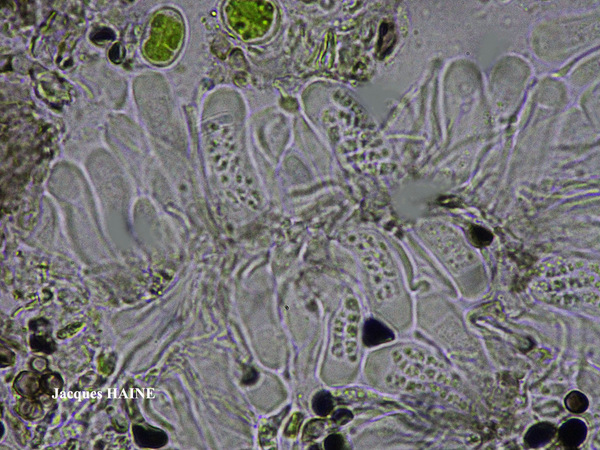
Jacques Haine - Source: http://www.lichensmaritimes.org/index.php?task=fiche&lichen=1230&lang=en
Belgium, Cerfontaine
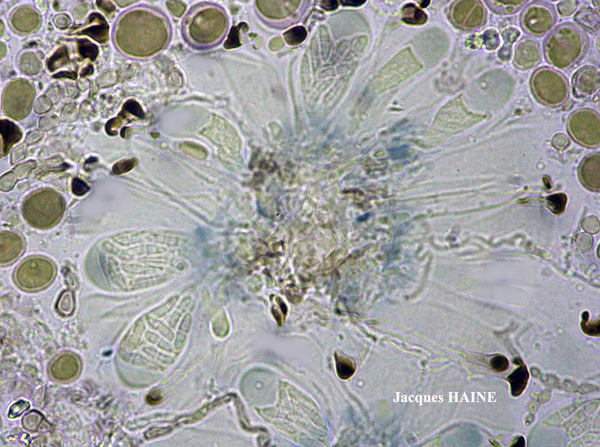
Jacques Haine - Source: http://www.lichensmaritimes.org/index.php?task=fiche&lichen=1230&lang=en
Belgium, Cerfontaine
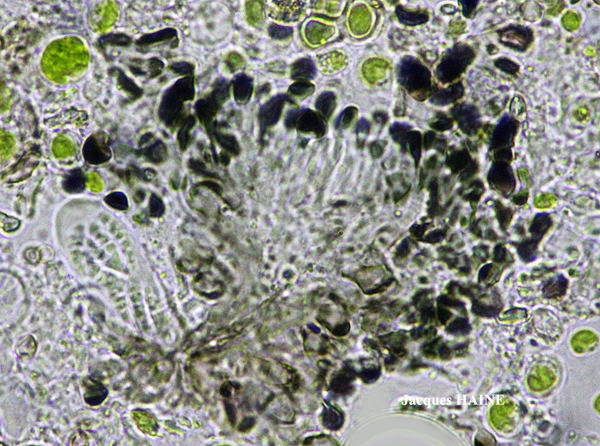
Jacques Haine - Source: http://www.lichensmaritimes.org/index.php?task=fiche&lichen=1230&lang=en
Belgium, Cerfontaine
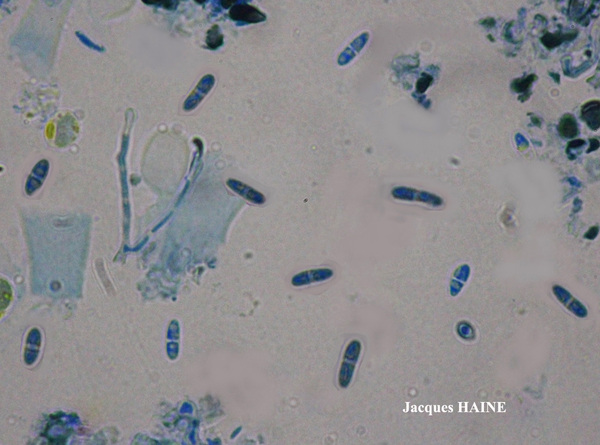
Jacques Haine - Source: http://www.lichensmaritimes.org/index.php?task=fiche&lichen=1230&lang=en
Belgium, Cerfontaine
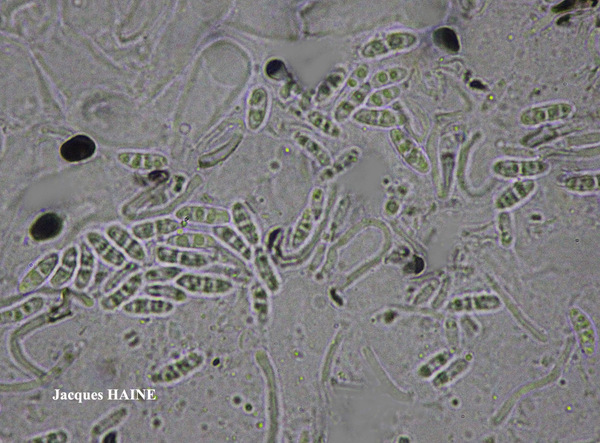
Jacques Haine - Source: http://www.lichensmaritimes.org/index.php?task=fiche&lichen=1230&lang=en
Belgium, Cerfontaine
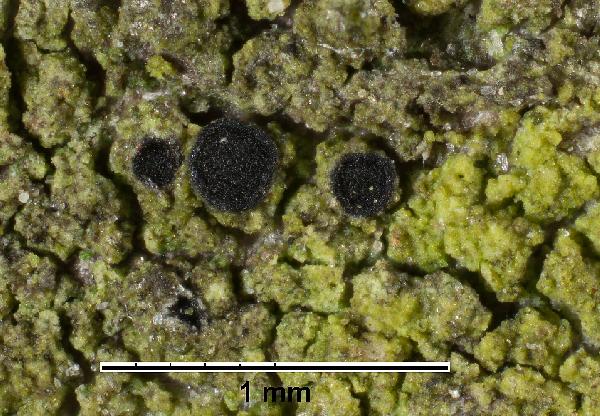
Ulrich Kirschbaum CC BY-SA 4.0 - Source: https://www.thm.de/lse/ulrich-kirschbaum/flechtenbilder
On twigs of Carpinus betulus.
Central Europe; Germany: Hesse
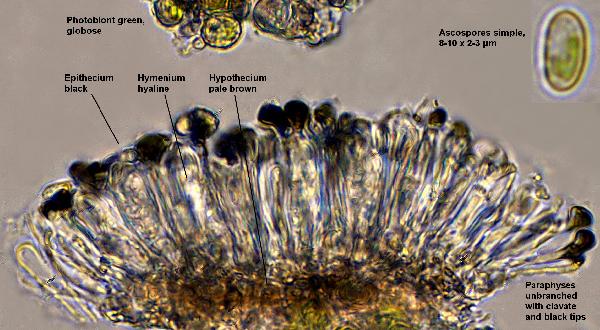
Ulrich Kirschbaum CC BY-SA 4.0 - Source: https://www.thm.de/lse/ulrich-kirschbaum/flechtenbilder
On twigs of Carpinus betulus.
Central Europe; Germany: Hesse


Felix Schumm - CC BY-SA 4.0
[VZR487], Italia, Venezia, Cavallino Treporte, prope Treporte, 3 m, ad
corticem arborium (Robinia pseudoacacia), 12°27'10,6'' orient.,
45°28'05.6'' septentr., Leg. & det. K.Kalb, 25.5.2002. Ex A. V zda:
Lichenes Rariores Exsiccati Nr. 487.
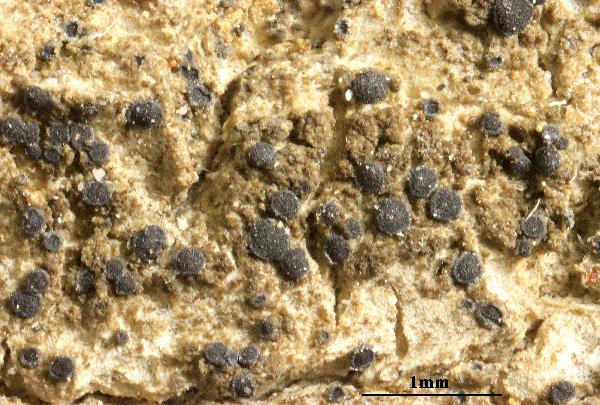

Felix Schumm - CC BY-SA 4.0
[VZR487], Italia, Venezia, Cavallino Treporte, prope Treporte, 3 m, ad
corticem arborium (Robinia pseudoacacia), 12°27'10,6'' orient.,
45°28'05.6'' septentr., Leg. & det. K.Kalb, 25.5.2002. Ex A. V zda:
Lichenes Rariores Exsiccati Nr. 487.
Growth form: Crustose
Substrata: bark
Photobiont: green algae other than Trentepohlia
Reproductive strategy: mainly sexual
Commonnes-rarity: (info)
Alpine belt: absent
Subalpine belt: absent
Oromediterranean belt: absent
Montane belt: rather rare
Submediterranean belt: rather common
Padanian area: rare
Humid submediterranean belt: common
Humid mediterranean belt: rare
Dry mediterranean belt: extremely rare

Predictive model
| Herbarium samples |


P.L. Nimis; Owner: Department of Life Sciences, University of Trieste
Herbarium: TSB (7171)
2001/11/23


P.L.Nimis; Owner: Department of Life Sciences, University of Trieste
Herbarium: TSB (30170)
2008.03.06


E. Pittao; Owner: Department of Life Sciences, University of Trieste
Herbarium: TSB (TSB 30170)
20.10.2009


E. Pittao; Owner: Department of Life Sciences, University of Trieste
Herbarium: TSB (TSB 30170)
20.10.2009


E. Pittao; Owner: Department of Life Sciences, University of Trieste
Herbarium: TSB (TSB 30170)
20.10.2009

Courtesy: Olivier et Danièle Gonnet - Source: https://www.afl-lichenologie.fr/Photos_AFL/Photos_AFL_C/Textes_C3/Catillaria_nigroclavata.htm
France, oct. 2015 - sur Arbutus unedo - Madonetta - Corse

Courtesy: Olivier et Danièle Gonnet - Source: https://www.afl-lichenologie.fr/Photos_AFL/Photos_AFL_C/Textes_C3/Catillaria_nigroclavata.htm
France, oct. 2015 - sur Arbutus unedo - Madonetta - Corse

Courtesy: Olivier et Danièle Gonnet - Source: https://www.afl-lichenologie.fr/Photos_AFL/Photos_AFL_C/Textes_C3/Catillaria_nigroclavata.htm
France, oct. 2015 - sur Arbutus unedo - Madonetta - Corse

Courtesy: Olivier et Danièle Gonnet - Source: https://www.afl-lichenologie.fr/Photos_AFL/Photos_AFL_C/Textes_C3/Catillaria_nigroclavata.htm
France, oct. 2015 - sur Arbutus unedo - Madonetta - Corse

Jacques Haine - Source: http://www.lichensmaritimes.org/index.php?task=fiche&lichen=1230&lang=en
Belgium, Cerfontaine

Jacques Haine - Source: http://www.lichensmaritimes.org/index.php?task=fiche&lichen=1230&lang=en
Belgium, Cerfontaine

Jacques Haine - Source: http://www.lichensmaritimes.org/index.php?task=fiche&lichen=1230&lang=en
Belgium, Cerfontaine

Jacques Haine - Source: http://www.lichensmaritimes.org/index.php?task=fiche&lichen=1230&lang=en
Belgium, Cerfontaine

Jacques Haine - Source: http://www.lichensmaritimes.org/index.php?task=fiche&lichen=1230&lang=en
Belgium, Cerfontaine

Jacques Haine - Source: http://www.lichensmaritimes.org/index.php?task=fiche&lichen=1230&lang=en
Belgium, Cerfontaine

Jacques Haine - Source: http://www.lichensmaritimes.org/index.php?task=fiche&lichen=1230&lang=en
Belgium, Cerfontaine

Jacques Haine - Source: http://www.lichensmaritimes.org/index.php?task=fiche&lichen=1230&lang=en
Belgium, Cerfontaine

Jacques Haine - Source: http://www.lichensmaritimes.org/index.php?task=fiche&lichen=1230&lang=en
Belgium, Cerfontaine

Jacques Haine - Source: http://www.lichensmaritimes.org/index.php?task=fiche&lichen=1230&lang=en
Belgium, Cerfontaine

Jacques Haine - Source: http://www.lichensmaritimes.org/index.php?task=fiche&lichen=1230&lang=en
Belgium, Cerfontaine

Jacques Haine - Source: http://www.lichensmaritimes.org/index.php?task=fiche&lichen=1230&lang=en
Belgium, Cerfontaine

Jacques Haine - Source: http://www.lichensmaritimes.org/index.php?task=fiche&lichen=1230&lang=en
Belgium, Cerfontaine

Ulrich Kirschbaum CC BY-SA 4.0 - Source: https://www.thm.de/lse/ulrich-kirschbaum/flechtenbilder
On twigs of Carpinus betulus. Central Europe; Germany: Hesse

Ulrich Kirschbaum CC BY-SA 4.0 - Source: https://www.thm.de/lse/ulrich-kirschbaum/flechtenbilder
On twigs of Carpinus betulus. Central Europe; Germany: Hesse


Felix Schumm - CC BY-SA 4.0
[VZR487], Italia, Venezia, Cavallino Treporte, prope Treporte, 3 m, ad corticem arborium (Robinia pseudoacacia), 12°27'10,6'' orient., 45°28'05.6'' septentr., Leg. & det. K.Kalb, 25.5.2002. Ex A. V zda: Lichenes Rariores Exsiccati Nr. 487.


 INDEX FUNGORUM
INDEX FUNGORUM
 GBIF
GBIF
 DOLICHENS
DOLICHENS
